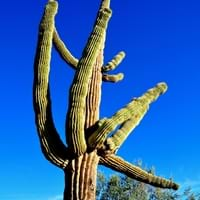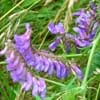Life Span
Annual
Perennial
Type
grain
Cactus or Succulent
Origin
Hybrid origin
Caribbean, Central America, Northern America, South America
Types
Not Available
Grafted Gymnocalycium Cultivars, Echinopsis chamaecereus cultivar, Pilosocereus pachycladus, Austrocylindropuntia subulata monstrose
Number of Varieties
Not Available
Habitat
Cultivated Beds
Desert
USDA Hardiness Zone
2-11
Not Available
AHS Heat Zone
10 - 2
Not Available
Sunset Zone
A3, H1, 1a, 1b, 2a, 2b, 3a, 3b, 4, 5, 6, 7, 8, 9, 12, 13, 14, 15, 16, 17, 18, 19, 20, 21, 22, 23, 24
Not Available
Habit
Upright/Erect
Not Available
Flower Color
Yellow
Magenta, Red, White, Yellow
Flower Color Modifier
Bicolor
Not Available
Fruit Color
Light Green, Tan, Sandy Brown
Not Available
Leaf Color in Spring
Green, Light Green
Green
Leaf Color in Summer
Green
Several shades of Green
Leaf Color in Fall
Yellow green, Tan
Light Green
Leaf Color in Winter
Light Green
Several shades of Green
Leaf Shape
Lobed
Globe shaped
Plant Season
Summer, Fall
Summer
Sunlight
Full Sun
Bright direct sunlight
Type of Soil
Loam, Sand
Loamy, Sandy, Well drained
The pH of Soil
Acidic, Neutral
Alkaline
Soil Drainage
Well drained
Well drained
Bloom Time
Late Spring, Early Summer
Early Summer, Late Spring, Summer
Tolerances
Drought
Drought
Where to Plant?
Ground
Ground, Pot
How to Plant?
Seedlings
Grafting, Seedlings, Transplanting
Plant Maintenance
Medium
Medium
Watering Requirements
Medium
Does not require lot of watering, Water once every two or three weeks, Water when soil is dry
In Summer
Lots of watering
Lots of watering
In Spring
Moderate
Moderate
In Winter
Average Water
Average Water
Soil Type
Loam
Loamy, Sandy, Well drained
Soil Drainage Capacity
Well drained
Well drained
Sun Exposure
Part sun
Bright direct sunlight
Pruning
Remove damaged leaves, Remove dead branches, Remove dead leaves
Prune if you want to improve plant shape, Prune ocassionally, Remove dead leaves
Fertilizers
All-Purpose Liquid Fertilizer
All-Purpose Liquid Fertilizer
Pests and Diseases
Red blotch
Aphids, Caterpillars, Cochineal insect, Mealybugs, Nematodes, Red spider mite, Rodent, Root rot, Scale, Slugs, Snails, Thripes, Viruses, Worms
Plant Tolerance
Drought
Drought
Flower Petal Number
Single
Not Available
Fragrant Bark/Stem
Yes
No
Foliage Texture
Coarse
Not Available
Foliage Sheen
Matte
Not Available
Allergy
Not Available
Not Available
Aesthetic Uses
Farmland
Showy Purposes
Beauty Benefits
Not Available
Not Available
Environmental Uses
Air purification
Air purification
Medicinal Uses
Asthma, Bone disorders, Cellular Health, Diabetes, Digestion problems, Skin Disorders
Diabetes, Hangover
Part of Plant Used
Fibre
Flowers, Leaves
Other Uses
Animal Feed, Used for its medicinal properties
Employed in herbal medicine, Fine spines and trichomes are used as fiber for weaving, Showy Purposes, Used As Food, Used as Ornamental plant, Used in construction, Used in Furniture
Used As Indoor Plant
No
Yes
Used As Outdoor Plant
Yes
Yes
Garden Design
Edible
Feature Plant
Botanical Name
X TRITICOSECALE
Cactaceae
Common Name
Triticale
Cactus
In Hindi
triticale
Naagaphanee
In German
Triticale
Kaktus
In French
triticale
Cactus
In Spanish
triticale
El Cactus
In Greek
τριτικάλε
κάκτος
In Portuguese
triticale
cacto
In Polish
pszenżyto
kaktus
Phylum
Magnoliophyta
Tracheophyta
Class
Liliopsida
Dicotyledonae
Order
Agaricales
Caryophyllales
Genus
Triticosecale
Not Available
Clade
Angiosperms, Commelinids, Monocots
Angiosperms, Eudicots
Tribe
Triticeae
Not Available
Subfamily
Not Available
Cactoideae, Maihueniodeae, Opuntioideae, Pereskioideae
Number of Species
Not Available
Season and Care of Triticale and Cactus
Season and care of Triticale and Cactus is important to know. While considering everything about Triticale and Cactus Care, growing season is an essential factor. Triticale season is Summer and Fall and Cactus season is Summer and Fall. The type of soil for Triticale is Loam, Sand and for Cactus is Loamy, Sandy, Well drained while the PH of soil for Triticale is Acidic, Neutral and for Cactus is Alkaline.
Triticale and Cactus Physical Information
Triticale and Cactus physical information is very important for comparison. Triticale height is 91.40 cm and width 15.20 cm whereas Cactus height is 27.55 cm and width 3.44 cm. The color specification of Triticale and Cactus are as follows:
Triticale flower color: Yellow
Triticale leaf color: Green and Light Green
Cactus flower color: Magenta, Red, White and Yellow
- Cactus leaf color: Green
Care of Triticale and Cactus
Care of Triticale and Cactus include pruning, fertilizers, watering etc. Triticale pruning is done Remove damaged leaves, Remove dead branches and Remove dead leaves and Cactus pruning is done Prune if you want to improve plant shape, Prune ocassionally and Remove dead leaves. In summer Triticale needs Lots of watering and in winter, it needs Average Water. Whereas, in summer Cactus needs Lots of watering and in winter, it needs Average Water.





